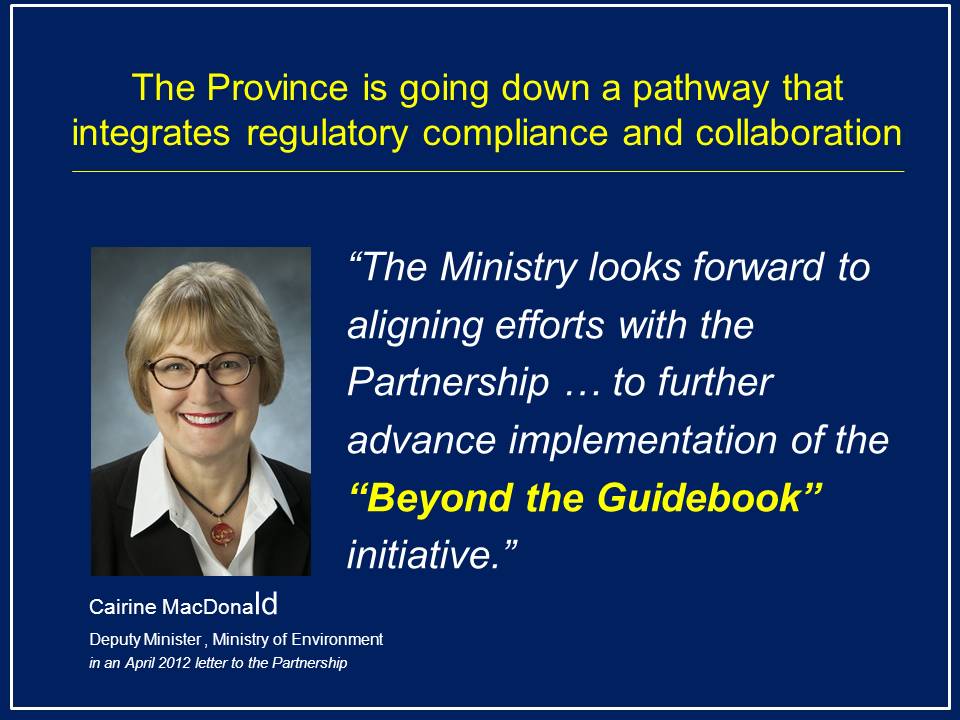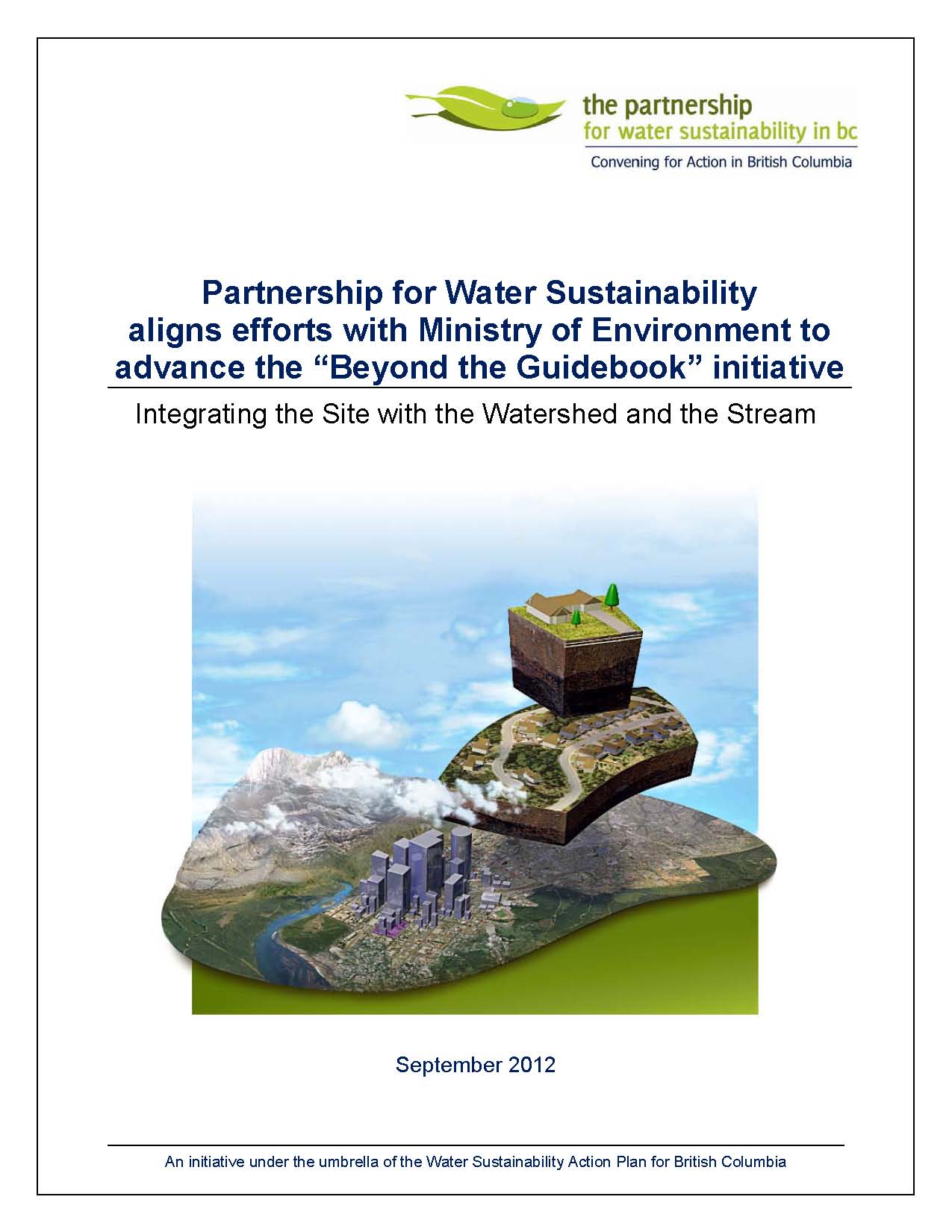FLASHBACK TO 2012: Ministry of Environment and Partnership for Water Sustainability aligned efforts to advance the 'Beyond the Guidebook' initiative
Note to Reader:
The Partnership for Water Sustainability in BC is helping the Province implement the Living Water Smart and Green Communities initiatives in the local government setting. Launched in 2008, these initiatives comprise plans, strategies, targets, actions and tools to reduce the ‘water footprint’ of BC communities.
The Partnership is the steward for Stormwater Planning: A Guidebook for British Columbia and is leading the “Beyond the Guidebook” initiative. This is building on the technical foundation provided by the Guidebook. The curriculum for the Capital Region Water Balance Model Workshop advances the “Beyond the Guidebook” approach to rainwater management in a watershed sustainability context.
The Mission: Demonstrate How to Integrate Regulatory Compliance and Collaboration
“The Ministry looks forward to aligning efforts with the Partnership in three regions — Vancouver Island, Lower Mainland and the Okanagan — to further advance implementation of the “Beyond the Guidebook”initiative; and provide communities with the tools and knowledge to protect and/or restore watershed health,” stated Cairine MacDonald, (former) Deputy Minister, BC Ministry of Environment, in April 2012.
“The Ministry’s renewed emphasis on the rainwater management component of Liquid Waste Management Plans has created an opportunity to demonstrate how to integrate regulatory compliance and collaboration.”
About the “Beyond the Guidebook” Initiative
 “In 2002, the Guidebook advanced this provocative premise: land development and watershed protection can be compatible. This radical shift in practitioner thinking resulted from recognition of HOW a science-based understanding could bridge the gap between high-level policy objectives and site design practices,” recalls Peter Law, Chair of the inter-governmental Guidebook Steering Committee (2000-2002).
“In 2002, the Guidebook advanced this provocative premise: land development and watershed protection can be compatible. This radical shift in practitioner thinking resulted from recognition of HOW a science-based understanding could bridge the gap between high-level policy objectives and site design practices,” recalls Peter Law, Chair of the inter-governmental Guidebook Steering Committee (2000-2002).
“The Guidebook formalized the Water Balance Methodology for rainfall capture and runoff control. The Guideboook integrated hydrology and aquatice ecology. This built on Washington State research findings about the four factors limiting stream health. And it set the stage for defining water sustainability as an outcome of green infrastructure policies and practices.”
Green Infrastructure and Stream Health
 “Over the next five years, British Columbia practitioners became comfortable with what ‘rainfall capture’ meant in practice. By 2007, it was time to focus attention on how to truly protect and/or restore stream health in urban watersheds. The evolution in watershed thinking was captured in Beyond the Guidebook: Context for Rainwater Management and Green Infrastructure in British Columbia, released in June 2007,” continues Kim Stephens, Partnership Executive Director.
“Over the next five years, British Columbia practitioners became comfortable with what ‘rainfall capture’ meant in practice. By 2007, it was time to focus attention on how to truly protect and/or restore stream health in urban watersheds. The evolution in watershed thinking was captured in Beyond the Guidebook: Context for Rainwater Management and Green Infrastructure in British Columbia, released in June 2007,” continues Kim Stephens, Partnership Executive Director.
“Beyond the Guidebook added geomorphology to the mix. This addressed the relationship between volume control (rainfall capture) and resulting flow rates in streams; and correlated stream health with stream erosion.”
To Learn More:
Click on Partnership for Water Sustainability aligns efforts with Ministry of Environment to advance the “Beyond the Guidebook” initiative to download a report-style document. It comprises two stand-alone yet interconnected parts. The first part is an announcement about Partnership collaboration with the Ministry of Environment. The second part traces the history of the “Beyond the Guidebook” initiative which the Partnership is leading.



